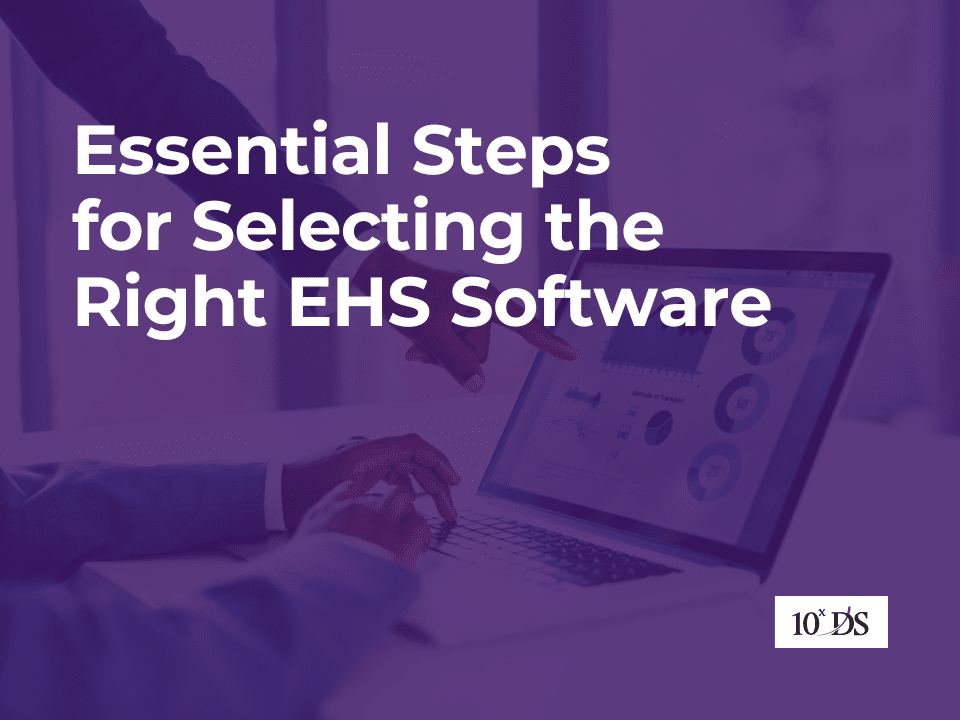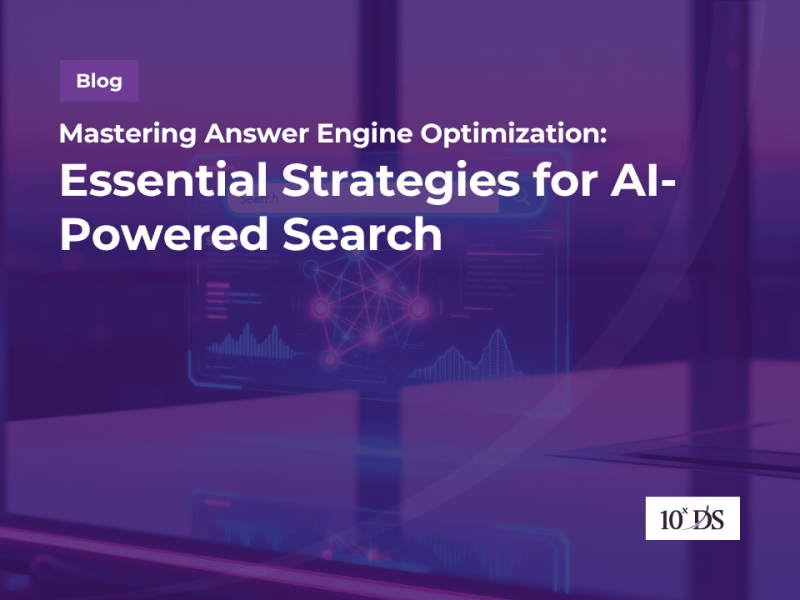
Essential Steps for Selecting the Right EHS Software
You’ve probably heard someone mention EHS technology in a recent meeting or caught it in an industry article—but didn’t dig deeper. For many, Environmental, Health, and Safety (EHS) tech still sounds like a niche topic reserved for compliance teams or manufacturing floors. But behind the acronym lies a fast-evolving space that’s quickly becoming central to how organizations manage risk, meet regulatory demands, and demonstrate sustainability.
More and more leaders are realizing that EHS is no longer just a checklist item—it’s a strategic asset. And with so many digital platforms on the market, the challenge isn’t just whether you need EHS technology, but how to choose the right one for your business.
In this guide, we’ll break it down simply. Whether you’re just starting your EHS tech journey or looking to upgrade, here’s what you need to know to make a smart, future-ready choice.
What is EHS Technology?
EHS technology encompasses digital platforms and tools that help organizations manage compliance with environmental regulations, health and safety standards, and sustainability objectives. Modern EHS systems go beyond manual tracking by offering centralized dashboards, real-time reporting, mobile access, and automation capabilities. These solutions not only enhance operational efficiency but also support long-term sustainability efforts by streamlining workflows and minimizing human error.
Why Is EHS Software Critical Today?
Think back to some of the biggest workplace safety or environmental disasters in recent memory—chemical leaks, fires, factory shutdowns. Many of these could have been prevented or mitigated with the right systems in place. That’s where EHS software comes in.
Today, organizations are under more pressure than ever. Regulatory demands from bodies like OSHA, the EPA, and international standards like ISO 45001 are becoming more complex and constantly changing. In fact, according to a recent Verdantix report, over 60% of EHS professionals cite “regulatory complexity” as their biggest operational challenge.
Traditional methods—like spreadsheets, emails, or outdated software—just can’t keep up. Modern EHS platforms provide a centralized system to manage compliance, monitor risks, and respond to issues in real time. For example, one manufacturing firm that implemented cloud-based EHS software saw a 40% reduction in safety incidents within a year by identifying high-risk patterns and automating corrective actions.
But it’s not just about compliance. The rise of ESG (Environmental, Social, and Governance) standards has elevated EHS from a back-office function to a boardroom priority. Investors, customers, and regulators now expect transparency around emissions, safety performance, and sustainability progress. EHS software supports these expectations by tracking Scope 1, 2, and 3 emissions defined by Greenhouse Gas (GHG) Protocol, automating ESG reporting, and helping companies benchmark progress against industry goals.
Most Frequently Searched Topics in EHS Technology
Today’s decision-makers are diving deep into a handful of key areas that are shaping the future of workplace safety and sustainability. Let’s look at what’s trending:
- Cloud-Based EHS Solutions: Businesses are increasingly turning to cloud-based EHS solutions due to their flexibility, scalability, and ease of access. Cloud platforms are often quicker to deploy, provide automatic updates, and reduce upfront costs.
- Mobile EHS Apps: Field workers, who are often exposed to the highest safety risks, need mobile access to report incidents and perform inspections on-the-go. Mobile apps that support offline data entry, photo uploads, and voice-to-text notes are in high demand.
- ESG Reporting Integration: As companies aim to align their EHS and sustainability efforts, integrating ESG reporting into EHS software is a growing priority. Companies are searching for tools that can track emissions, set sustainability goals, and provide necessary disclosures.
- Incident Management Software: Effective incident management systems that allow businesses to track, analyze, and respond to incidents are critical for safety improvement. Many decision-makers are comparing different software options for their ability to manage incidents efficiently.
- AI in EHS: The integration of AI and predictive analytics in EHS systems is on the rise. Companies are looking for AI-driven solutions that predict potential risks and optimize inspections to improve safety outcomes.
- Automation of Compliance Tracking: Many organizations seek solutions that automate compliance tracking, ensuring that they meet all regulatory requirements without the need for manual data entry.
- EHS Software ROI: Decision-makers are keen to understand the return on investment (ROI) for EHS technology. They are looking for ways to measure the financial benefits of adopting EHS software, such as reduced fines, increased safety, and operational efficiencies.
These trending topics will be discussed in more detail throughout this guide, helping you make a more informed decision on which EHS solution suits your business.
Step-by-Step Guide to Choosing the Right EHS Solution
Step 1: Understand Your Business Needs
The first step in choosing the right EHS technology is to fully understand your business’s unique requirements. Start by asking yourself a few questions:
- What are the key risks and compliance requirements in our industry?
- Are we more focused on environmental sustainability, safety, or both?
- Do we have multi-site or global operations?
- What are the pain points with our current system?
By answering these questions, you can create a clear list of must-have features (such as incident tracking or regulatory compliance) and nice-to-have features (like mobile access or AI-driven insights). This will help narrow down your options and guide your decision-making process.
Step 2: Get Stakeholder Buy-In Early
Involving key stakeholders from the beginning is critical to ensuring the software meets your organization’s needs and is widely adopted. This should include:
- EHS leaders, who understand the day-to-day requirements
- IT and security teams to ensure compatibility with your current infrastructure
- Operations managers for integration into business processes
- Executive sponsors for strategic alignment and long-term support
Their input will be invaluable in ensuring the software integrates seamlessly across departments and is set up for success in the long term.
Step 3: Define Key Functional Requirements
Once you’ve aligned with stakeholders, the next step is to define the core features your EHS software must have. Key functionalities to look for include:
- Incident Management: Allows you to track, analyze, and respond to incidents to improve safety.
- Audit & Inspection Tools: Digitally schedule and report on audits and inspections to enhance accountability.
- Regulatory Compliance Tracking: Stay compliant with local, regional, and global regulations.
- Mobile Access: Enable teams to report incidents and conduct inspections in the field.
- Analytics & Dashboards: Real-time data insights for informed decision-making.
Focusing on these essential features ensures the software will help you meet your operational, compliance, and safety goals.
Key Considerations When Evaluating EHS Technology
- On-Premises vs. Cloud-Based EHS Solutions: Cloud-based solutions offer lower upfront costs, scalability, ease of access, and automatic updates, making them the preferred option for most organizations today. On-premises solutions, however, offer full control over your infrastructure and may be more suitable for industries with stringent data protection requirements. In general, cloud-based EHS solutions are more flexible, easier to implement, and cost-effective for businesses of all sizes.
- Don’t Ignore Mobile Capabilities: Field workers, who face the greatest EHS risks, often have limited access to desktop systems. It’s crucial to choose an EHS solution with robust mobile functionality, allowing field teams to report incidents, conduct inspections, and submit data in real-time, even when offline.
- ESG & Sustainability Integration: With the growing emphasis on sustainability, choosing an EHS software that supports ESG (Environmental, Social, and Governance) initiatives is essential. Look for platforms that enable you to track Scope 1, 2, and 3 emissions, set sustainability goals, and provide ESG disclosures.
- How AI and Predictive Analytics Are Shaping EHS: Advanced EHS platforms are increasingly integrating AI and predictive analytics to help organizations anticipate incidents before they occur.
- Vendor Evaluation Checklist: When evaluating potential EHS software vendors, consider factors such as industry experience, customization options, mobile capabilities, data security, and scalability. Request demos, check references, and evaluate vendor support to ensure a good fit for your organization.
- Real-Time Data Capture: EHS systems should allow for instant data entry and monitoring, enabling quicker responses to incidents or compliance deviations—especially in fast-paced or hazardous environments.
- Document Management: A centralized document control system is crucial for organizing and securing critical records like policies, permits, audits, and training files.
- Automated Reporting: Automation reduces administrative burdens by generating scheduled or triggered reports on compliance, safety, and ESG metrics—boosting consistency and data integrity.
- Measuring ROI of EHS Technology: Measuring the ROI of EHS software is critical to justify the investment. Track improvements such as reduced incidents, better audit scores, time saved on reporting, and the avoidance of regulatory fines.
Some Common Pitfalls to Avoid
When selecting EHS software, avoid common pitfalls that can undermine your investment. Don’t get swayed by flashy features that may not serve your actual business needs. Prioritize usability—overly complex systems can hinder adoption. Also, ensure proper change management, including training and internal communication. Finally, keep long-term costs, such as ongoing maintenance and upgrades, in mind to avoid unexpected financial burdens.
Final Thoughts: The Future of EHS Is Digital, Predictive, and People-Centered
Choosing the right EHS technology isn’t just about software—it’s a strategic decision that will shape the future of your business’s safety, compliance, and sustainability efforts. Look for a solution that integrates seamlessly with your existing systems, supports your ESG goals, and evolves with your organization’s needs. With the right tools in place, you’ll not only ensure regulatory compliance and employee safety but also drive long-term operational efficiency and sustainability across your business.
Talk to our experts to learn more!


